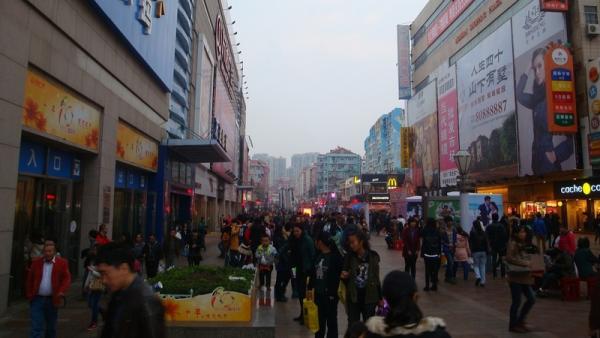
James Laurenceson, Deputy Director, Australia-China Relations Institute, University of Technology Sydney |
This article appeared in the Sun Herald on Jaunary 16 2015.
It’s been a tough few years for the Victorian economy.
In 2013-14, output per person in the state actually went backwards. But there’s something to cheer about: the China boom is relocating and its Victoria that is ideally placed to act as the new host.
To date it’s mostly been Australia’s natural resources that China has wanted. Goods exports to China account for a monstrous 27 percent of Western Australia’s gross state product (GSP). The flipside is that non-resources exporting states have been stuck in the slow lane of a two speed economy: the figure for Victoria is just one percent.
But several factors have combined to bring about change more rapid than anyone could have imagined just 12 months ago.
Exporting resources is no longer the license to print money that it once was. Sure, China still wants our iron ore. The volume of Australian iron ore shipped to China in the September quarter of 2014 was up 33 percent from a year earlier.
Its prices that have slumped, in fact by more than 50 percent since last January. That’s been enough to deliver an income recession at the national level. Yet Victoria’s direct exposure to all of this is limited. Nationally the share of minerals and fuels in total exports is 54 percent. For Victoria it is less than nine percent.
As the resources sector has come off the boil, the exchange rate has fallen. This has provided a boost to other exporting sectors of the economy, such as services and agriculture. These are Victoria’s competitive strengths.
Far more important than the exchange rate though is the rise of China’s middle class. Research by the Brookings Institution suggests that their number could grow by 850 million by 2030. That’s more than six times the population of Japan. The top of their shopping lists? Well, for a start try dairy products from Gippsland, tours of The Great Ocean Road and an education from one of Melbourne’s world class universities.
The impact of China’s middle class is already plain to see.
China is Victoria’s largest customer for goods exports. China buys almost twice as much from the state as the U.S. It buys more than double that bought by Japan. Agricultural exports to China alone were worth $3 billion in the past year.
But it’s services where Victoria’s China story really gets interesting. The state’s biggest export money spinner is education, raking in $4.5 billion in 2013. According to the Australian Trade Commission, as of September there were 28,442 Chinese students at Victorian universities. This compares with a mere 510 from the U.S and 323 from Japan.
After education it’s tourism. China dominates again: over the past year Victoria had 352,000 Chinese visitors, compared with 151,000 from the U.S and 39,000 from Japan.
These services and agriculture were the big winners from the China-Australia Free Trade Agreement signed in November. Tariffs on dairy products for example, currently as high as 20 percent, will be completely phased out over a 4-11 year period.
China is also proving to be more than just a customer. Since 2009 it has sunk $7 billion of investment into the state, according to KPMG and Sydney University. That’s a $7 billion bet on the vibrancy of the Victorian economy and the productivity of its workers.
Best of all is that Victoria’s China boom has the potential to underpin demand for decades to come. Of course, Victoria is not the only state now running hard. The Australia-China Relations Institute (ACRI) played host to the release of the New South Wales government’s China strategy in September. It’s a safe bet that Premier Daniel Andrews is set to embrace the partnership that China offers. Victoria will be better for it.
Author
Professor James Laurenceson is Deputy Director of the Australia-China Relations Institute at the University of Technology Sydney.


